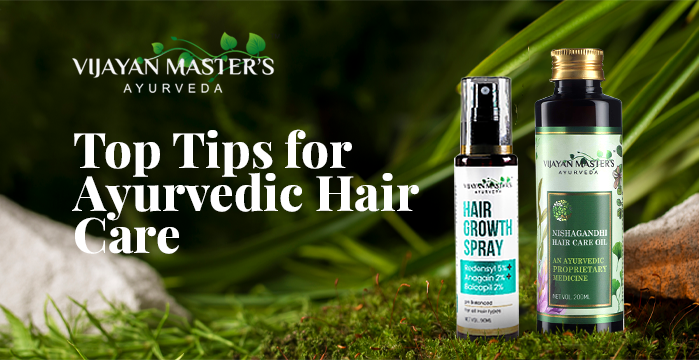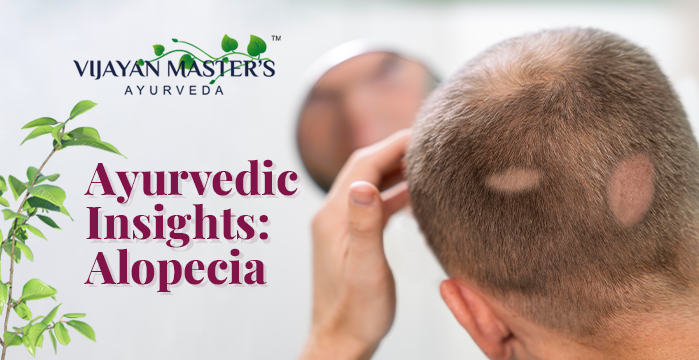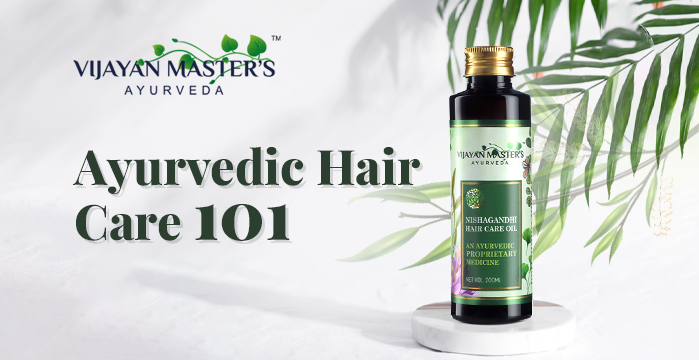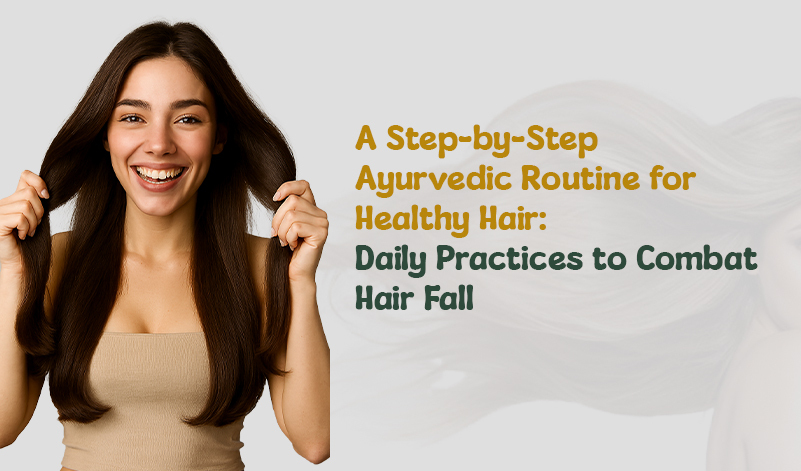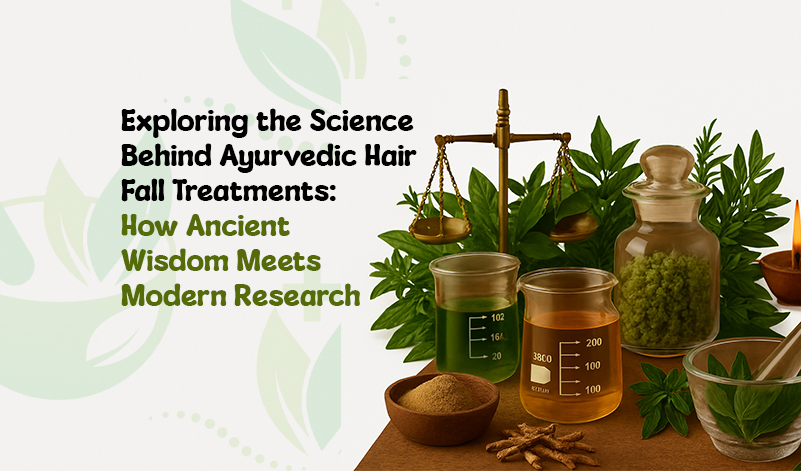Ultimate Ayurvedic Hair Care Routine for Healthy Hair
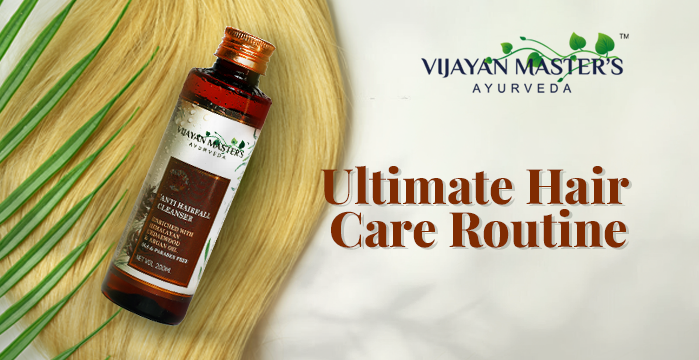
Do you realize that your unhealthy hair is due to poor diet and lifestyle?
Traditional Ayurvedic science emphasizes the importance of diet and lifestyle in effectively maintaining hair health.
Aside from carrying out hair treatments with herbs, Ayurveda incorporates the notion of healthy Ahara-Vihara (food and lifestyle), which helps both your physical and mental health, as well as your hair's health.
Ayurveda's holistic approach highlights the need to maintain a regular hair care routine.
Together, let's go over what it is and more!
Ayurvedic Natural Hair Care Routine: The 10 Essential Steps
1. Identify your Hair Type
Ayurveda believes that the three essential energies Vata, Pitta, and Kapha control our body activity. Each and every person is a mix of these doshas, with one or two doshas dominating, which defines your hair type and its health.
Vata Hair Type: If you're Vata-dominant, your hair will be thin and straight, however eating a balanced diet will assist. When the Vata dosha is unbalanced, it causes dryness, frizz, and hair loss.
Pitta Hair Type: If Pitta is your dominant Prakriti, your hair will be wavy and medium-thick. Moreover, Imbalanced Pitta can lead to premature graying, scalp irritation, and hair loss.
Kapha Hair-type - Kapha-dominant people typically have thick, curly hair. When Kapha is unbalanced, it can cause an abnormally oily scalp, dandruff, itching, and hair loss.
Understanding your hair type and the current status of your dosha levels allows you to incorporate particular herbs into your Ayurvedic hair treatments.
2. Oil Your Hair Regularly
Ayurveda suggests that your scalp has energy-relieving spots known as 'Marmas'. Oiling your scalp and hair is a rejuvenation method that removes excess or irritated doshas from your head via marmas.
Aside from rejuvenation, frequent scalp & hair massage with Ayurvedic oils promotes healthy, strong, and glossy hair development through the nourishing, root-strengthening, and conditioning characteristics of herbs.
Traditional Ayurvedic procedures entail oiling your hair for at least 20 minutes before washing it. For best results, massage your scalp and hair with heated oil at night before washing your hair the next day. This provides an excellent natural conditioning treatment for your scalp and hair.
Procedure to Follow:
- Apply warm oil on your scalp.
- Massage the entire scalp in a circular motion with your fingers for about 15 minutes.
- Gently massage some oil into your hair roots up to the tips. This circular scalp massage increases blood flow and improves oil penetration into the deeper layers of your scalp.
3. Wash your Hair Periodically
The follicles of your scalp are full of excess oil, unwanted accumulation of dirt and grime, which you need to get rid of by shampooing your scalp daily with Ayurvedic hair treatments.
At Vijayan Master’s Ayurveda, we suggest washing your hair regularly or using warm water or gentle massage 2-3 times a week.
4. Learn how to Comb
Combing, when effective, is a great way to improve blood flow to your scalp. It detangles and smoothes your hair and distributes your natural scalp oils from your scalp properly throughout your strands. However, over-combing can damage your hair by stretching it, causing breakage and split ends.
Ayurveda recommends gently combing your hair once or twice with a gentle wooden comb. Also, to avoid the accumulation of dirt, wash your comb regularly and do not share it with others.
5. Trim your Hair Regularly
Broken hair with split ends makes the appearance of your hair look thin and harsh. To avoid this, trim your split ends regularly. Trim your hair every 8-12 weeks to ensure your hair doesn’t have split ends.
6. Avoid Chemical Products
Harsh chemicals used in hair products may change the pH of your hair, stripping your hair of its natural oils and proteins. Go for Vijayan Master’s Ayurvedic hair treatment with natural herbs for complete hair health without taking unnecessary risks.
7. Avoid Heat Styling
Overuse of heat styling products such as blow dryers, straightening or curling irons can cause hair to become dry and damaged over a period of time. Increased Vata Dosha, resulting in dryness, further leading to hair breakage and split ends, and hair loss. The best process to follow is to wash your hair and let it air dry.
8. Protect your Hair from Harsh Environments
Environmental pollution and UV rays damage your hair follicles by interfering with natural oils in your scalp. It makes it dull, brittle and lifeless. Also, excessive use of alcohol and cigarettes can worsen your problem, causing more hair loss.
Wear a hat or scarf to protect your hair when walking outside or swimming in chlorinated water. Avoid smoking and drinking alcohol to keep your hair healthy.
9. Eat Right
A well-balanced nutritional diet is one of the most important aspects of maintaining your hair health. Aside from picking meals based on your ‘Prakriti’, make sure they contain key nutrients for hair development such as Vitamins A, B, C, D, E, and K, as well as minerals including iron, zinc, and protein.
10. Exercise Regularly
Regular exercise is essential for sweating off toxins from your body. Sweating from the scalp tissues unclogs the hair follicles. Exercise also increases blood flow, which helps your scalp tissues absorb nutrients and oxygen.
Ayurveda suggests that you practice yoga, meditation, and pranayama daily to maintain your body, mind, and spirit in harmony. Cycling, Zumba dancing, jogging, or brisk walking are all examples of moderate to high-level cardio workouts that can help with hair and body health.
Bottom Line
Ayurveda is a way of living that helps us stay balanced and energized by synchronizing our body cycles with those of nature. This is accomplished by following a program that is tailored to your specific Prakriti and hair type while maintaining a balanced dosha system can lead to great hair health. This is why, at Vijayan Master's Ayurveda, we create tailored natural hair care routines to properly treat your hair loss.
Come, visit us to learn more!




